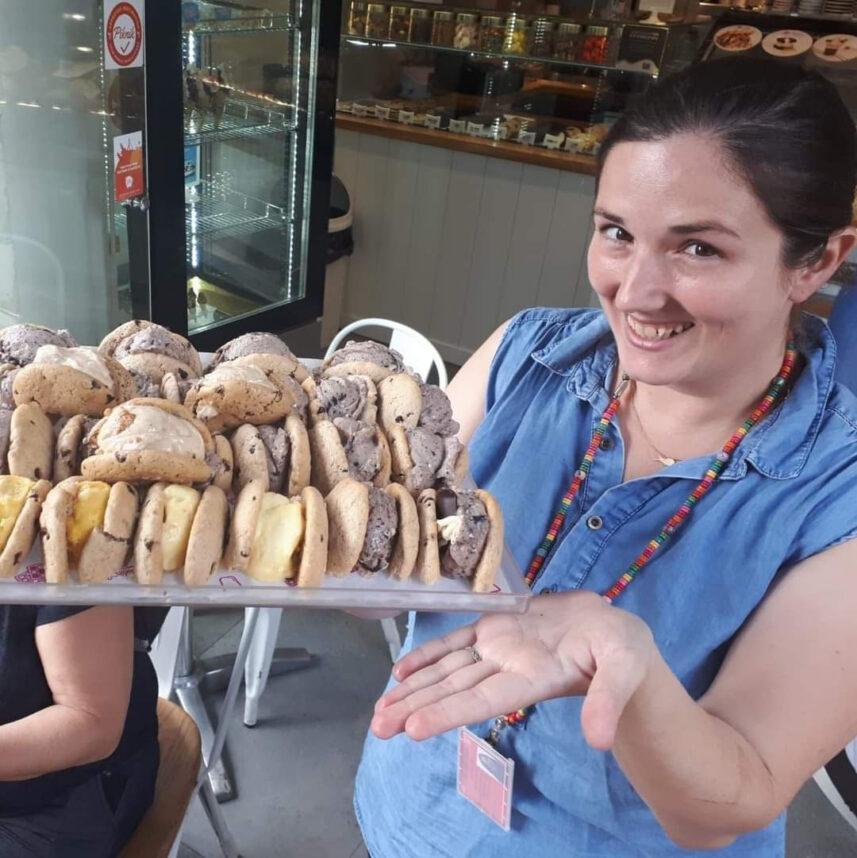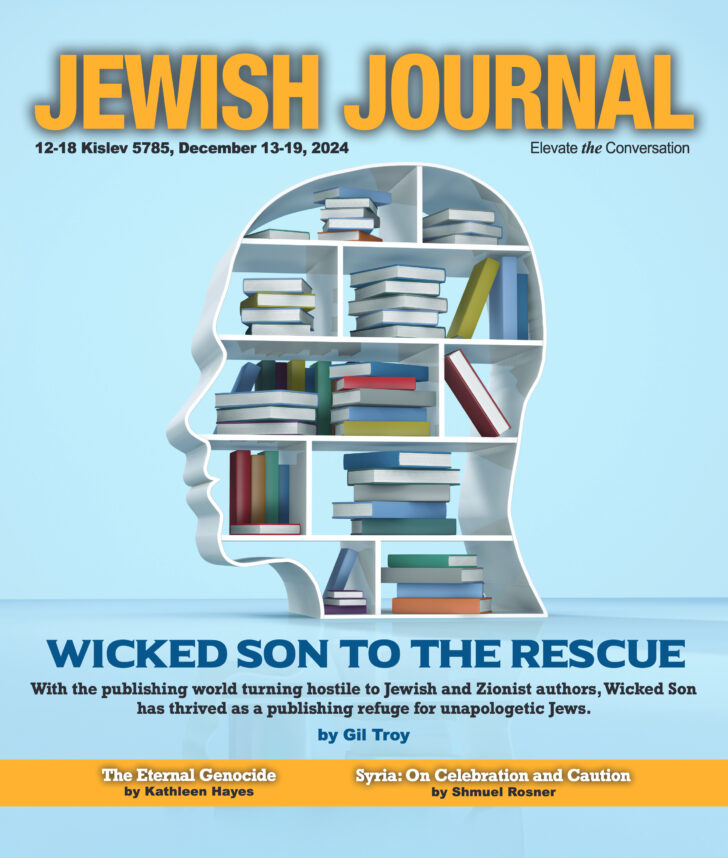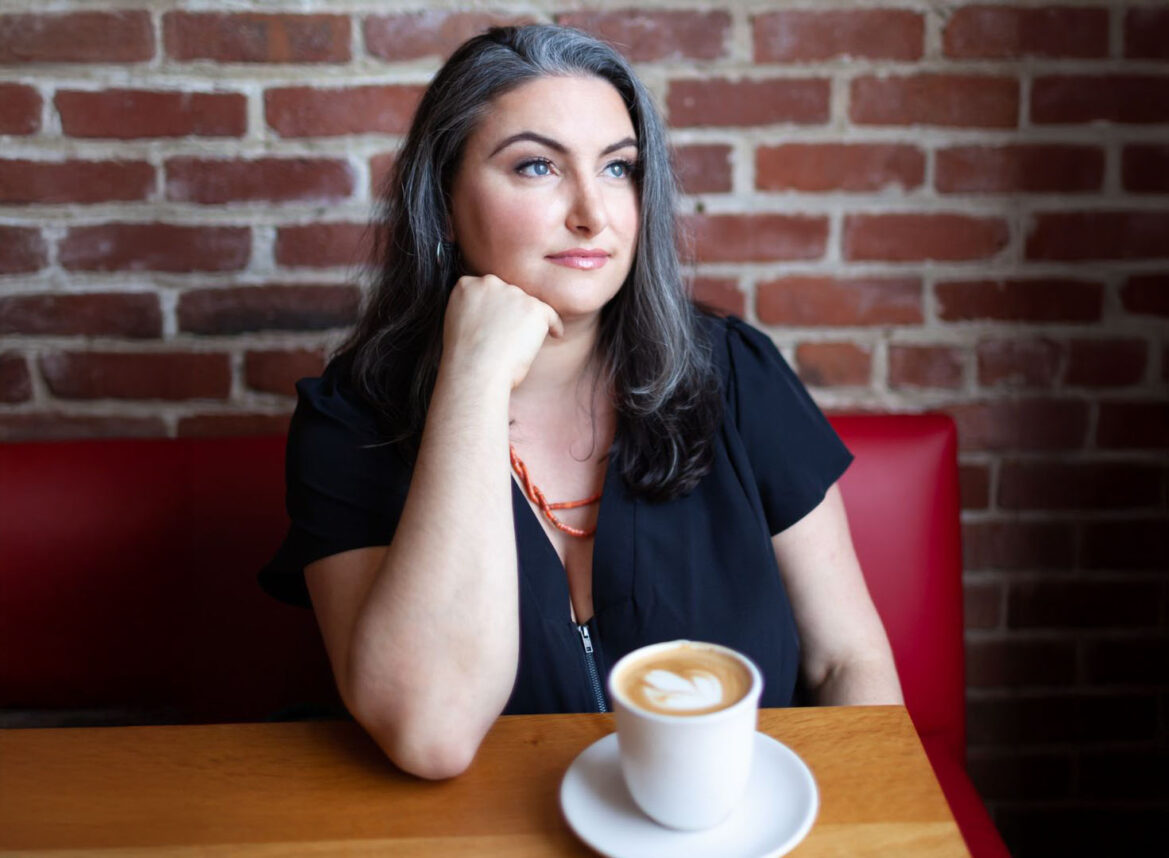In a corner of the brightly lit dining hall of the Eisenberg Village campus at the Jewish Home for the Aging sit The Three Wise Guys. These three men — Ellis Simon, 77; Hy “Spike” Spikell, 93, and Jules Berlinsky, 90 — have formed a friendship so strong that they rate having their own table, No. 56, and they are not the least bit shy about telling you why they love living at the Jewish Home.
“I like the beautiful women. They’re all around 82 — to me that’s a spring chicken,” Spikell quipped. But then the nonagenarian grows serious, talking about his 10 years at the home and the care he has received. “If it weren’t for the doctors and the nurses and the staff here, I wouldn’t be around.”
The Wise Guys are somewhat unusual at the home: 90 percent or more of its residents are women. But they all have come to embody the mission of the Jewish Home for the Aging: to create a place that fulfills the commandment to honor one’s mother and father by providing the community’s elderly with the best quality of care.
This year, the home is celebrating its 90th anniversary. Over the course of nearly a century, it has grown to become one of the pillars of the Los Angeles Jewish community and a fixture in the San Fernando Valley, where it is the largest single employer, according to spokesperson Bonnie Polishuk. Currently, the home has a combined total of 750 residents at its two locations, cared for by a staff of more than 650 people.
The home has a $32 million yearly operating budget. To provide care for its charges, it must raise $8 million to cover an annual shortfall.
The home’s modest founding occurred during Passover in 1912, when members of the Jewish community in Los Angeles obtained a cottage in Boyle Heights so that five elderly, homeless men could attend a traditional seder. At the close of the seder, the men, residents of the county poor farm, pleaded not to be sent back.
As recorded in a memoir from that time, one of the five, a Mr. Levy, stood with tears in his eyes saying, “Do not cast me away…. I shall always hear the words of the inmates of the county farm [saying], ‘Here, Jew. Here is some pork and beans.'”
Members of the Jewish community responded to the pleas of Levy and others by establishing the Hebrew Sheltering Home for indigent, elderly Jews on Rose Street in Boyle Heights. In 1974, residents were moved to a contemporary facility on Victory Boulevard in Reseda, known as Victory Village and later renamed Eisenberg Village.
Sheldon Blumenthal served as director and then CEO of the Jewish Home for the Aging from 1976 to 1995. When he first arrived, the home had only one campus, but was located just a few miles from another home for elderly Jews called Menorah Village, also in Reseda. In 1979, The Jewish Federation of Greater Los Angeles, which subsidized Menorah, requested that the two homes be merged.
Blumenthal said it was interesting, because the two institutions came from markedly different backgrounds. Eisenberg Village was founded by Eastern European Orthodox Jews seeking to ensure that elderly Jews could maintain a traditional lifestyle. Menorah Village grew out of a commune formed in the 1930s by trade unionists.
After Blumenthal retired, Molly Forrest joined the home as director and then CEO. Forrest is credited with bringing a new dynamic to the Jewish Home.
She embarked on an ambitious capital campaign to raise $72 million for renovations at both campuses and to build the new Alzheimer’s unit, also known as the Goldenberg-Ziman Special Care Center, which opened in April (see sidebar). Another building for medical and nursing care will replace two aging structures on the Grancell campus in the coming year.
Forrest acknowledges the challenges of meeting the needs of an increasingly diverse elderly group. Whereas the original population was largely European, the Jewish Home’s community now encompasses both Ashkenazi and Sephardic Jews.
Residents may speak more than a dozen different languages in addition to English, including Spanish, German, Yiddish, Russian and Farsi. Forrest said the home makes every attempt to arrange as roommates people who share a common language and culture.
Forrest is known throughout the home for her ability to lead and achieve consensus among both residents and staff. She gives employees an opportunity to voice their opinions and make suggestions at a quarterly program dubbed “Speak Easy.”
The residents also have a great deal of say when it comes to conditions at the home. Forrest meets once every six weeks with residents from each campus and said the meetings attract about 200 or 300 at the Eisenberg campus alone. They discuss a variety of issues, from new developments in health care to current events in Los Angeles, as well as changes within the home.
“For example, last week I met with the residents at Grancell to tell them about our plans to retire two buildings there,” Forrest said in a recent interview. “I told them we would be moving about 50 residents from Grancell to Eisenberg, not necessarily from the two buildings we would be taking down, but more so we can downsize over there.
“One woman raised her hand and said, ‘My friend and I have eaten together for four years. She would be lost without me. Are you going to split us up?’ And I said, absolutely not. We don’t split up families, and we don’t split up close friendships. If we did that, and hurt someone, then I would be at fault for not listening to my elders,” she stressed.
Forrest takes that last adage very seriously. She knows she cannot please everyone at all times, but she also believes deeply that the residents have a stake in the home. It was the residents who pushed to maintain kosher standards when the board of directors was considering changing to a “kosher-style” dining hall to cut expenses.
Polishuk said it costs $300,000 extra to maintain kashrut standards, including mashgiach services. Although only 20 percent of residents keep kosher, more than 500 of the home’s 750 residents signed a petition asking that the needs of the most observant be met. The board complied.
Another principle that makes the home unique is that once you are admitted, you are admitted for life. Robert Zuckerman, a chiropractor and the third generation of Zuckermans to serve on the Jewish Home’s board of directors, remembers when his father, Ted Zuckerman, developed Alzheimer’s. He said personnel from the home came to him and asked to be allowed to care for his father.
“They wanted him there, just as they had had my grandfather — H. Lew Zuckerman, one of the founders of the original home in Boyle Heights — there the year before he died,” Zuckerman recalled. “It was almost a testament to them, since they were involved from the beginning. The care was exceptional; I can’t say enough about it.”
Zuckerman pointed to the Neighborhood Homes program as a prime example of the Jewish Home’s uniqueness in this regard. The program currently involves seven properties behind Grancell Village. It allows residents who are most able to care for themselves to live in houses relatively independently with three or four other people, with the home available to go to for activities and for dining if they so choose.
Zuckerman’s father-in-law, philanthropist Earl Grenitz, who founded The Executives, one of 10 fundraising groups supporting the home, is currently seeking to buy properties and expand the program close to the Eisenberg campus. The program is often a good first step for those seniors reluctant to give up their independence, Polishuk said. As Neighborhood Home residents grow older and need more assistance, she explained, they are gradually integrated into the appropriate area within Grancell.
“That’s what’s so special: you can go in ambulatory and functioning, then you can move into residential and nursing care, and you’re cared for all along the way,” Zuckerman said. “There’s no other place like it.”
The Three Wise Guys would certainly agree.
You may want to drop by this Sunday for the Jewish Home for the Aging’s Eighth Annual “World’s Largest Mother’s Day” celebration. An estimated 1,500 people are expected to attend the multigenerational event, which is open to the public and will be held from 11 a.m. to 2 p.m. at the Eisenberg Village campus, 18855 Victory Blvd. in Reseda. As they do each year, home officials and staff will honor one woman as “Community Mother of the Year” and will also announce the winners of the “Why My Mom is Best” essay contest that drew participation from students of local public, private and parochial schools. Costs for the event are $15 for adults, $5 for children and include brunch.
For reservations, call (818) 774-3324.





















 More news and opinions than at a Shabbat dinner, right in your inbox.
More news and opinions than at a Shabbat dinner, right in your inbox.